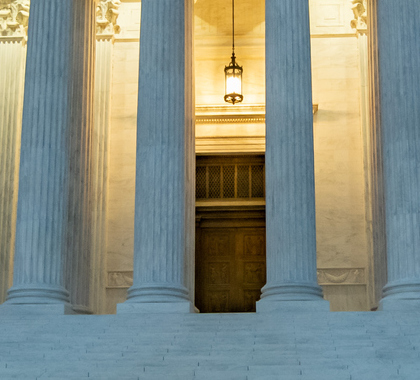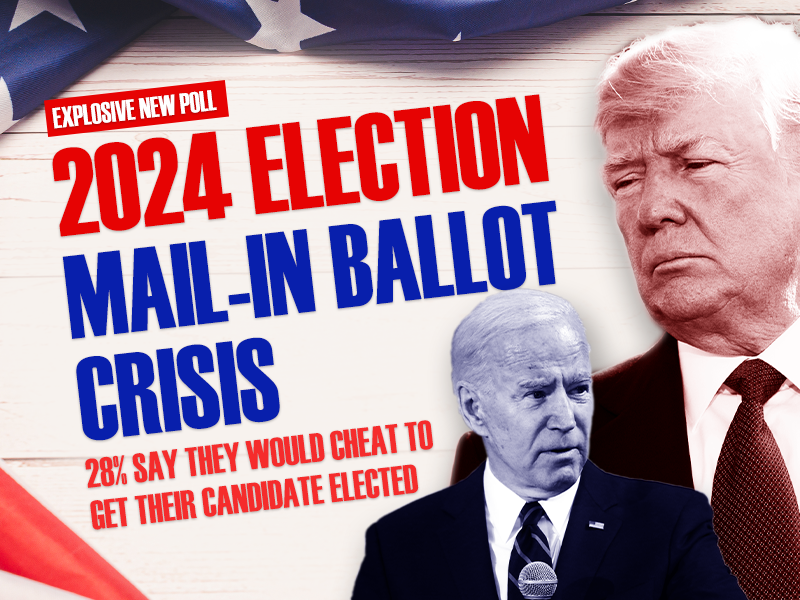In a prior post, I described the key Supreme Court cases in the 2021-2022 term. That term resulted in (1) the reversal of Roe v. Wade and Planned Parenthood v. Casey, (2) the expansion of the right to possess guns and (3) greater protection of religious liberty. These results were largely in line with my predictions and with my analysis of the constitutional law issues being debated and decided.
This term will see a new Justice, Ketanji Brown Jackson, who replaced the recently retired Justice Stephen Breyer. It is not expected that this will have a material impact on the Court’s decisions because it appears that Jackson’s judicial philosophy is very similar to Breyer’s. However, this term has the potential to be a watershed in areas ranging from the power of the regulatory state to racial preferences to the control of elections by state legislatures and so much more. Contrary to the many overheated claims that the Supreme Court is a threat to our democracy, I predict this term will restore sound constitutional principles
The other change is on a personal level. I have returned to teaching about the Constitution and constitutional law.
The 2022-2023 term of the Supreme Court began on October 3. These are the cases I consider to be the most important ones to watch.
- Sackett v. EPA. In the spring of 2007, Michael and Chantell Sackets prepared to build a house on their property in Idaho. However, after they began filling in preparation for foundation work and before they broke ground, the Environmental Protection Agency (EPA) warned the Sacketts that their property was a “wetland” protected by the Clean Water Act. The EPA issued an administrative order directing the Sacketts to remove the fill, restore the property to the condition it had been in, and wait three years to apply for a permit to build on their property. The administrative order provided for a $75,000 fine per day if they failed to comply with it. The Sacketts objected to the administrative order and claimed that their property was not a “wetland” and the EPA had no jurisdiction over it under the Clean Water Act. The question of what is a “wetland” has been muddled since the case of Rapanos v. United States in 2006. In that case, the lead opinion was supported by four Justices. Justice Kennedy concurred with the result but not with the reasoning behind the result. The Kennedy definition became known as the Rapanos test. It provided that a “wetland” is any property having a “significant nexus” with a traditionally defined navigable body of water. The Sacketts are asking the Supreme Court to clarify that a “wetland” is property directly adjacent to a navigable waterway or within the boundaries of the property in question. It is significant that Jackson, in oral arguments before the Court, has aggressively indicated that the ability to regulate the use of private property is more important than the language of the Clean Water Act. I predict that the Court will rule in favor of the Sacketts.
- Students for Fair Admissions, Inc. v. President and Fellows of Harvard College
- Students for Fair Admissions, Inc. v. University of North Carolina
These cases were originally consolidated and scheduled to be argued together, but the Supreme Court separated them because Justice Jackson had to recuse herself from the Harvard case. The issue in the two cases is substantially similar. As background, the last major case dealing with racial preferences in college admissions was Grutter v. Bollinger in 2003, in which the Court said it was constitutionally permissible to use race as one of many factors. Famously, Justice Ginsburg said that she expected that racial preferences wouldn’t be necessary in 25 years. The Students for Fair Admissions wants the Grutter decision reversed, and racial preferences in college admissions constitutionally prohibited. For readers interested in technical issues, one of the grounds in the University of North Carolina case was a denial of equal protection as guaranteed by the 14h Amendment. Interestingly, that was not applicable in the Harvard case because, as a private college, it is not subject to the equal protection clause of the 14th Amendment. The students disadvantaged by the racial preferences are groups that are high achievers, mainly Asian Americans and Jews. I predict the opinion in these cases will end racial preferences in college admissions.
- 303 Creative LLC v. Elenis. This case involves a Colorado woman named Lori Smith who started a web design business in 2012 with the express purpose of promoting causes consistent with her beliefs, such as supporting children with disabilities, the beauty of marriage, overseas religious missions, animal shelters, and veterans. Her website designs that celebrate marriage only celebrated marriage between a man and a woman. She has claimed that she only designs websites that promote causes that she supports and her decisions are not based on who asks her to design a website. She says that, as an artist, she has the right to decide what to create. After watching Colorado use its human rights law to punish Masterpiece Cakeshop because the owner refused to bake cakes for same sex weddings, she sued to prevent enforcement of the Colorado statute against her limitation of wedding web sites to weddings between a man and a woman. This is the latest and likely not the last case dealing with the alleged conflict between the constitutional right of freedom of speech under the First Amendment and the rights of LGBT people to access public accommodations. It is likely that the Supreme Court will side with Lori Smith and her business, 303 Creative LLC, because ruling against her would effectively mean that people can’t engage in commercial activity without forfeiting their right and ability to decide what causes to which they give their creative efforts.
- National Pork Producers Council v. Ross. In 2018, California voters approved Proposition 12, which prohibits the sale of pork products in California unless the pig it comes from was born to a sow housed with at least 24 square feet of space and in conditions that allow the sow to turn around freely without touching her enclosure. The National Pork Producers Council claims that this law discriminates against non-California pork producers and places an undue burden on the interstate sale of pork products. California counters that the law only regulates pork products sold in California and does not regulate sales of pork products sold elsewhere and how pigs are bred elsewhere. This case involves what is known as the “dormant commerce clause,” which held that regulation by a state that discriminates against or places an undue burden on out-of- state producers violates the Commerce Clause of the Constitution. With a broadly interstate market, states can effectively regulate an entire industry without explicitly regulating out-of-state producers or sellers, so this case has broad implications beyond the pork industry. It is likely that the Court will invalidate the law created by Proposition 12, although there is limited evidence of the views of the justices on the dormant commerce clause.
- Percoco v. United States. Under a federal statute, “honest service fraud” is a criminal offense. The theory is that a public official has a duty to provide “honest services” to the general public. This case raises the issue whether a private citizen who holds no elective office or government employment owes a fiduciary duty to the general public if he has informal political or other influence over governmental decisions. Joseph Percoco had served as then-Gov. Andrew Cuomo’s Executive Deputy Secretary, but he left that position to serve as the chief of Cuomo’s re-election campaign. While in that role, he was approached by Steven Aiello to assist him to get a waiver for his company of the need to enter into a labor peace agreement with a local union. Aiello paid Percoco $35,000 for his agreement to encourage or pressure (choose your interpretation) the relevant state officials to get a waiver. Percoco claimed that he was not subject to the “honest service fraud” statute because he was not an officeholder or government employee. The Second Circuit refused to dismiss the charges because he maintained a position of public power and trust due to his close relationship with the governor and the expectation that he would return to his government job after the campaign. Percoco responded that the government’s theory would put all lobbyists in the crosshairs, and lobbying has long been held to be protected speech. The Court has previously narrowed the reach of the “honest service fraud” statute in a case involving Jeffrey Skilling of Enron, but the government pointed out that in the Skilling case the Court defined a “public official” to include not only an “officer or employee” but also a person acting “for or on behalf” of the government. They further pointed out that Percoco continued to use his office in the Executive Chamber and had placed the calls at issue from that office using a government telephone. The likely outcome is uncertain because the Court has tried to narrow the reach of the “honest service fraud” statute, however, it has also recognized that bribery is not protected speech or legitimate political activity. I expect that the Court will rule that Percoco’s actions were not subject to the statute.
- Moore v. Harper. Article I, Section 4 of the Constitution states that, “The Times, Places and Manner of holding elections for Senators and representatives, shall be prescribed in each State by the Legislature thereof; but the Congress may at any time by Law make or alter such Regulations, except as to the Places of chusing Senators.” After the 2020 census, North Carolina’s Legislature, which was dominated by Republicans, adopted a congressional map that was viewed as extremely partisan. Since the Court has previously held that gerrymandering is not subject to its review, a group of voters filed suit in North Carolina claiming that the map violated the “free election clause” in the North Carolina Constitution. The North Carolina Supreme Court agreed with the objecting voters, struck down the map, and created its own map. The Supreme Court denied an emergency appeal so the North Carolina Supreme Court map is in effect this year. However, two North Carolina legislators filed a regular appeal (which four Justices had urged in dissenting from the denial of the emergency appeal) claiming that the North Carolina courts had no power to invalidate a map approved by the Legislature. Their theory is known as the “independent state legislature theory.” Many commentators have described this theory as debunked, but they have provided no evidence of when or how it has been debunked. They point to the fact that the Founders distrusted State Legislatures and added the power of Congress to set rules for federal elections to prevent abusive practices. However, it was the North Carolina Supreme Court, not Congress, that invalidated the map approved by the Legislature. This case has enormous implications for future elections for senators and representatives because it would put State Legislature’s maps outside any review or appeal. I believe the Supreme Court will rule in favor of the “independent state legislature theory.”
- Merrill v. Milligan. This case is the second of the cases having enormous implications for the power of State Legislatures in drawing congressional maps. After the 2020 census, Alabama drew a map that created one congressional district out of its seven districts that had a majority of Black voters. The Black population of Alabama is approximately 27 percent of the population. A three-judge lower court (two of which judges are Trump appointees) held that the map violates Section 2 of the Voting Rights Act because it denies or dilutes the ability of Black Alabamans to elect representatives of their choice. That ruling was put on hold by the Supreme Court until they could make a final ruling in the case. Alabama asserts that its map is race neutral and there is no evidence that race was a factor in drawing the congressional map. Justices Kagan, Sotomayor, and Brown have been deeply skeptical of Alabama’s argument and they have pointed out that the Court has not looked to intent in prior cases involving Section 2 of the Voting Rights Act and that adopting Alabama’s position would eviscerate Section 2 of the Voting Rights Act and reverse 40 years of precedent. Justices Alito, Thomas, and Gorsuch are likely to side with Alabama. It is not clear where Justices Roberts, Kavanaugh, and Barrett will fall on the matter. So (with significant doubt), I expect Alabama to lose this case.
- Texas v. United States. This case deals with the challenge by Texas to the guidelines for immigration enforcement set by the Department of Homeland Security and whether the guidelines violate the Administrative Procedure Act. The lower court stayed the enforcement of the guidelines adopted by the Biden administration and the government is seeking a lifting of the stay. It is clear that the power to establish immigration law rests in Congress and the power to enforce immigration law rests in the Executive branch. Guidelines had been established during the Trump administration with the “Stay in Mexico” policy, so this case deals with the ability of a new administration to revise the guidelines and establish new guidelines. The Administrative Procedures Act has a process for adopting regulations and Texas claims these procedures were not followed. The federal government responds that they have not adopted new regulations but instead have made discretionary decisions about the best way to enforce federal immigration law. Given the skepticism that the Court has shown for administrative actions not clearly authorized by Congress, it is likely the Court will side with Texas and invalidate the Biden administration guidelines.
As the opinions are issued, I will update these cases. And, as new cases of significance are added to the docket, I will supplement the list of important cases to watch.
Comments and observation are welcome. Write me at [email protected].





